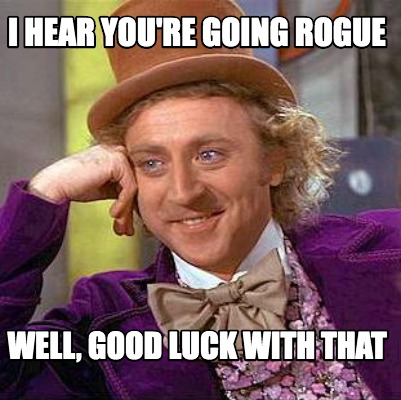When to push and how not to go rogue.
Digital marketing is both an art and a science—but when it comes to striking a balance between brand strategy and creative, it can be hard to know when you’ve gone too far in either direction.
As a boutique marketing agency, my company is frequently engaged by clients to develop messaging and creative strategies to persuasively connect with their audiences through a brand style guide. If it’s for the web, digital, social, or tools to enable effective selling or marketing, our primary goal is to connect our client’s value and solutions to their customer’s needs, ultimately resulting in closed business.
Smaller or mid-sized companies likely don’t have a brand style guide but instead employ general guidelines. Larger companies usually have comprehensive brand guidelines developed by brand agencies that are all-encompassing from tone of voice to application of visual elements over a range of digital/print delivery vehicles. These brand guidelines have a place in providing consistency over many touch points–as larger companies are typically supported by many specialized agencies based on their skill sets and expertise.
The dilemma is we often run into these two scenarios—usually simultaneously
- Brand guidelines are typically rigid but different lines of business within the company are looking to break out of the box and push the creative boundaries.
- Brand guidelines don’t provide enough rules for every type of communication and are often focused on the “greatest hits” of communication tactics today. But communication today is evolving faster than it has ever before and it leaves a gap into specific applications.
This gets into murky water. Murky in the sense that there is no clear path forward and no clear direction into pushing creativity as it aligns to the brand guidelines. Expanding the creative may be considered ‘going rogue’ and not expanding enough may be considered safe and not pushing the creative boundaries. So how do you strike that balance between brand strategy and creative?
When in this situation, we first study the brand standards to understand it holistically before drilling down into the specifics. With this baseline, we’re attuned to the brand needs and can establish a creative foundation on which to build a brand style guide. For successful application, we stick to these basic guidelines during the creative phase:
- Apply the minimums
- Take incremental steps
- Avoid going rogue
Apply the minimums
No matter what the creative strategy is and how close or far away it is from brand standards, the rule of applying the minimums should always be followed. The essential minimums that should always be factored in are:
- Use the brand color palette: Using brand colors is a no-brainer. No matter what, the color values will differentiate brand X over another.
- Use brand fonts: Same idea as colors. Sticking to brand fonts provides consistency.
- Use brand iconography (as much as possible): This is ideal but sometimes a little tricky because even though there may be a repository of brand icons, they don’t always work for every instance. New icons may need to be created within the visual style.
- Use brand photography: The style of photography should be carried through in terms of the type of images that best represent the brand and its audience. Understanding the company’s overall photographic style in the brand guidelines will provide the roadmap for choosing or creating new images that fit both creatively and strategically.
Take incremental steps
If we’re unsure of how far to push the creative boundaries, we apply the minimums and take thoughtful incremental steps away from established brand standards.
Using incremental steps is a good process for establishing how far companies really want to go when they say “push the boundaries”. It’s a safety net for us as we would never assume going right from point A to Z. Incremental steps allow us to show solutions starting from point A (most safe) and eventually winding up at the exact point that works.
Avoid going rogue
When the minimums aren’t applied and the creative strategy is too far away from brand standards, the company brand is compromised.
There is no formula for aligning to the brand if the guidelines aren’t crystal clear; that comes with experience and with thoughtful creative direction. To avoid going rogue, we regularly conduct review meetings to ensure the brand identity is fully intact no matter how far the creative strategy is pushed—or not. This due diligence up-front will help ensure the design passes branding approvals later on in the review process.

Not following these guidelines can result in a frustrating experience for both the company and agency. And we know this firsthand because we’ve taken over unsuccessful projects throughout the years.
Reading between the lines of corporate brand standards not only ensures the success of any given project but builds a level of trust with clients. That includes trust in our decision-making abilities to be proactive in interpreting the brand guidelines, differentiating it from the competition, and pushing the creative bar forward.
If you’re ready to start pushing the creative envelope for your brand, reach out to the digital creatives at Adventure House NYC to learn how we can help you exceed your goals.
- About the Author
- Latest Posts
Alex is the president of Adventure House and is based out of New York. He lives with his family and little cavapoo, Daisy.


